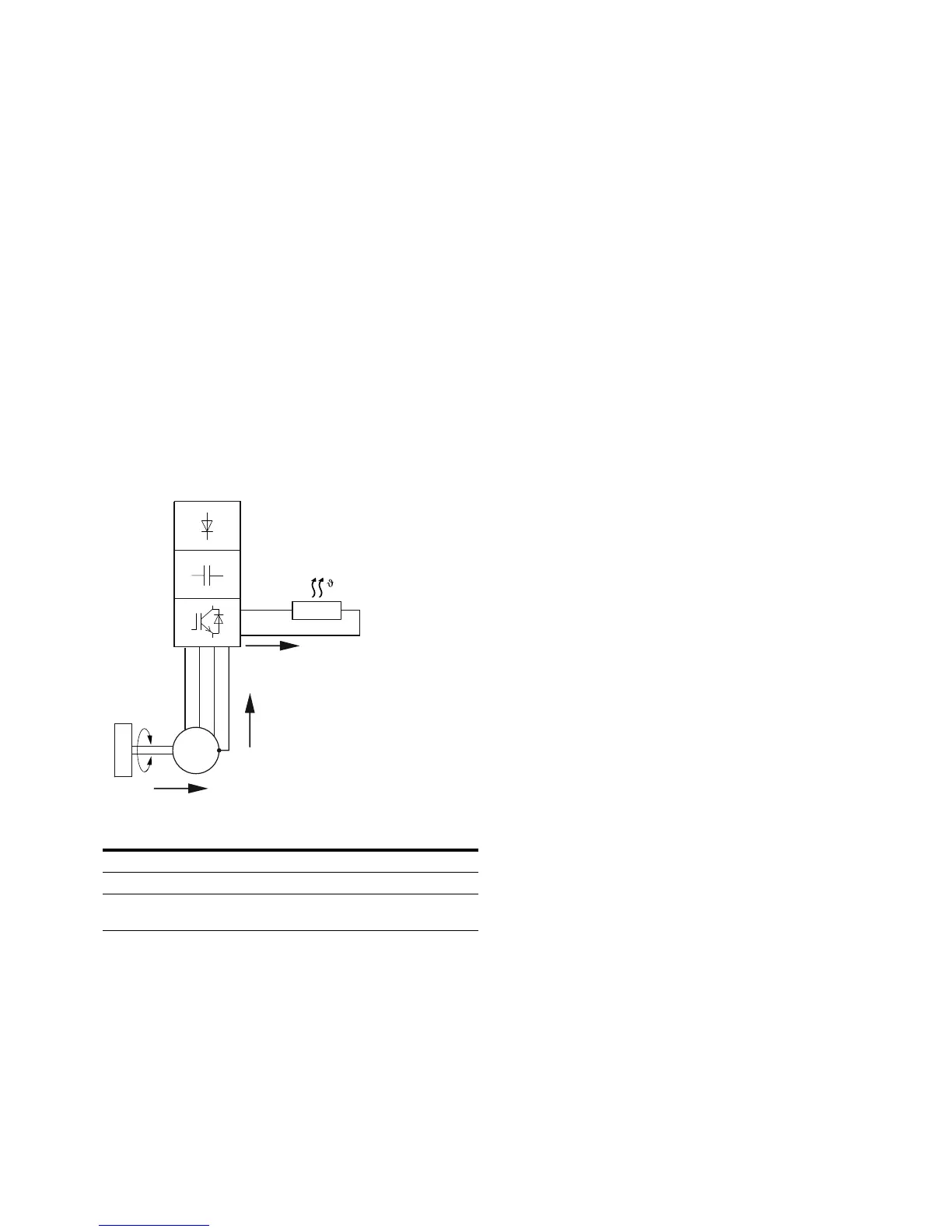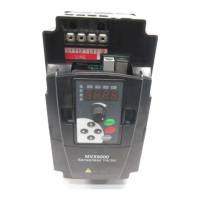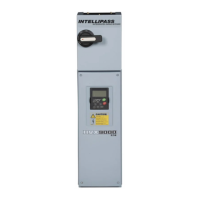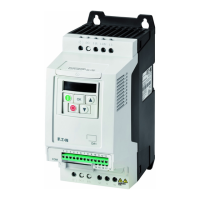Parameters
M-Max Series Adjustable Frequency Drive MN04020003E—October 2013 www.eaton.com 115
Regenerative Braking
If the rotor of an asynchronous motor is driven
oversynchronously in the direction of the rotating field, it
generates electric power via its stator windings. The motor
becomes a generator. In the frequency inverter, this
generative energy causes an increase in the DC link voltage.
Oversynchronous speeds occur, for example, when the
output frequency in frequency inverter operation is reduced
with short deceleration times, the connected machine has a
large flywheel mass, or when the flowing medium in pumps
and fans works against the speed reduction.
The rise in the DC link voltage is monitored by the M-Max
frequency inverter and always enables a braking torque of
around 30% of the motor rated torque. A higher braking
torque can be achieved by selecting a more powerful
frequency inverter. From the 1.1 kW (3.3A at 400V =
MMX34AA3D3_) rating, the internal brake chopper with an
external power resistor enables up to 100% of the rated
motor torque.
Regenerative Braking with External Braking Resistor
The brake chopper can be activated at parameter P12.5. This
function is only activated with the three-phase frequency
inverters MMX34…3D3_ (3.3A) to MMX34…014_ (14A).
These ratings have an internal brake transistor that can
dissipate excess brake energy via an external power resistor
(connection terminals R+ and R–) when large flywheel
masses or short deceleration times are involved.
This parameter is not visible with frequency inverters without
a braking transistor.
Item
Number Description
1 Machine flywheel mass
2 Inverter with brake chopper (brake transistor)
3 Brake resistor (RB)
See Energy Flow (brake torque)
M
R
B
3 ~
R+
R–
1
2
3

